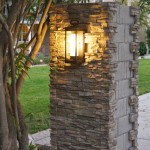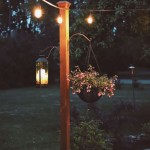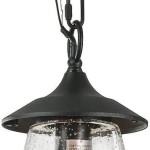Outdoor Lighting Battery: A Comprehensive Guide
Outdoor lighting plays a crucial role in enhancing the ambiance and security of any outdoor space. While traditional wired lighting solutions are effective, they often require extensive wiring and can be costly to install. Battery-powered outdoor lights offer a convenient and versatile alternative, providing illumination without the need for electrical connections. In this article, we delve into the world of outdoor lighting batteries, exploring their benefits, types, and key considerations when choosing the right battery-powered lighting solution.
Benefits of Outdoor Lighting Batteries
Outdoor lighting batteries offer numerous advantages over traditional wired lighting systems:
- Installation Flexibility: Battery-powered lights can be placed anywhere, eliminating the need for wiring and minimizing installation time and costs. They are ideal for areas where power outlets are unavailable or inconvenient to access.
- Portability and Versatility: Battery-powered lights are easily portable, allowing you to move them around as needed. This flexibility is particularly useful for events, camping trips, or creating temporary lighting arrangements.
- Energy Efficiency: Modern outdoor lighting batteries are designed with energy efficiency in mind. They often utilize LED technology, which consumes significantly less power than traditional incandescent bulbs.
- Environmentally Friendly: Battery-powered lights contribute to a greener environment by reducing energy consumption and minimizing reliance on fossil fuels.
- Enhanced Security: The ability to strategically place battery-powered lights in areas that need extra illumination enhances security by deterring potential intruders.
Types of Outdoor Lighting Batteries
Outdoor lighting batteries come in various types, each with its own characteristics and applications:
1. Rechargeable Batteries
Rechargeable batteries are the most common type used in outdoor lighting. They are typically lithium-ion batteries, offering a high energy density and long life cycle. These batteries can be recharged using a solar panel, AC power adapter, or USB port. The charging time and battery life vary depending on the battery capacity and the power consumption of the light.
2. Disposable Batteries
Although less common, disposable batteries, such as alkaline or carbon-zinc batteries, are still available for outdoor lighting. They are typically less expensive than rechargeable batteries but have a shorter lifespan and need to be replaced regularly. Disposable batteries are suitable for occasional use or in situations where recharging is impractical.
3. Solar-Powered Batteries
Solar-powered batteries are a sustainable and eco-friendly option for outdoor lighting. These batteries are charged by solar panels, harnessing the power of the sun to provide illumination. Solar-powered batteries are ideal for locations with ample sunlight exposure, such as gardens, patios, and walkways.
Key Considerations for Choosing Outdoor Lighting Batteries
When selecting outdoor lighting batteries, several factors should be considered:
1. Battery Capacity
The battery capacity, measured in milliampere-hours (mAh), determines the amount of power a battery can store. A higher battery capacity generally indicates longer runtime, but it also means a larger and heavier battery. Consider the intended use and the desired runtime to choose an appropriate battery capacity.
2. Battery Life Cycle
The battery life cycle refers to the number of times a battery can be recharged before its capacity deteriorates. Lithium-ion batteries have a longer life cycle than other types of batteries, typically lasting several hundred charge cycles. Choose batteries with a high life cycle to ensure long-term performance and minimize replacement costs.
3. Charging Methods
Outdoor lighting batteries can be charged using various methods, including solar panels, AC power adapters, and USB ports. Consider the availability of power sources and the charging time to determine the most suitable charging method.
4. Protection and Durability
Outdoor lighting batteries should be protected from the elements, such as rain, snow, and dust. Look for batteries with weather-resistant housings and seals to ensure longevity and reliable performance in outdoor environments.
5. Compatibility and Light Fixtures
Ensure that the battery is compatible with the outdoor lighting fixture you intend to use. Check the manufacturer's specifications for compatibility and voltage requirements. Some fixtures are specifically designed for battery-powered operation, while others may require modifications or adapters.
By thoughtfully considering these factors, you can select the ideal outdoor lighting battery to enhance the ambiance, security, and functionality of your outdoor space, while enjoying the benefits of energy efficiency and environmental friendliness.

Battery Powered Motion Sensor Led Outdoor Lights Set Of 2 64r86 Lamps Plus

Outdoor Led Battery Powered Motion Activated Wall Sconce T4505 Lamps Plus

Battery Powered Outdoor Light With Timer Lights Smartasaker

Hampton Bay 8 In Battery Operated White Led Rgb Color Changing Globe Ball Outdoor Path Light 1 Pack Rgb7000 001 The Home Depot

Jushua 1 Light Black Aluminum Battery Operated Outdoor Waterproof Post With Integrated Led Z103858 The Home Depot

Solar Outdoor Lights Rechargeable Battery Powered Led Exterior Lighting With Auto On Home Patio Backyard And Deck By Pure Garden 8 Pack Target

Muse Lantern Outdoor Battery Contardi Luxury Designer Lighting Enlightened Living

Auraxy Led Solar Motion Sensor Outdoor Light Waterproof Security Flood Lights Battery Powered Outside Activated Wall Porch Garage Garden Backyard Fence Patio Deck 4pack Com

Ring Smart Lighting Battery Black Motion Activated Outdoor Integrated Led Path Light 5lp1y8 Ben0 The Home Depot

Gooingtop Curtain Lights String Outdoor Battery Operated 11 2ft 54 Led Globe Fairy Plug In 10 Lighting Modes Hanging Waterfall Patio With Remote For Garden Decor Com
Related Posts







